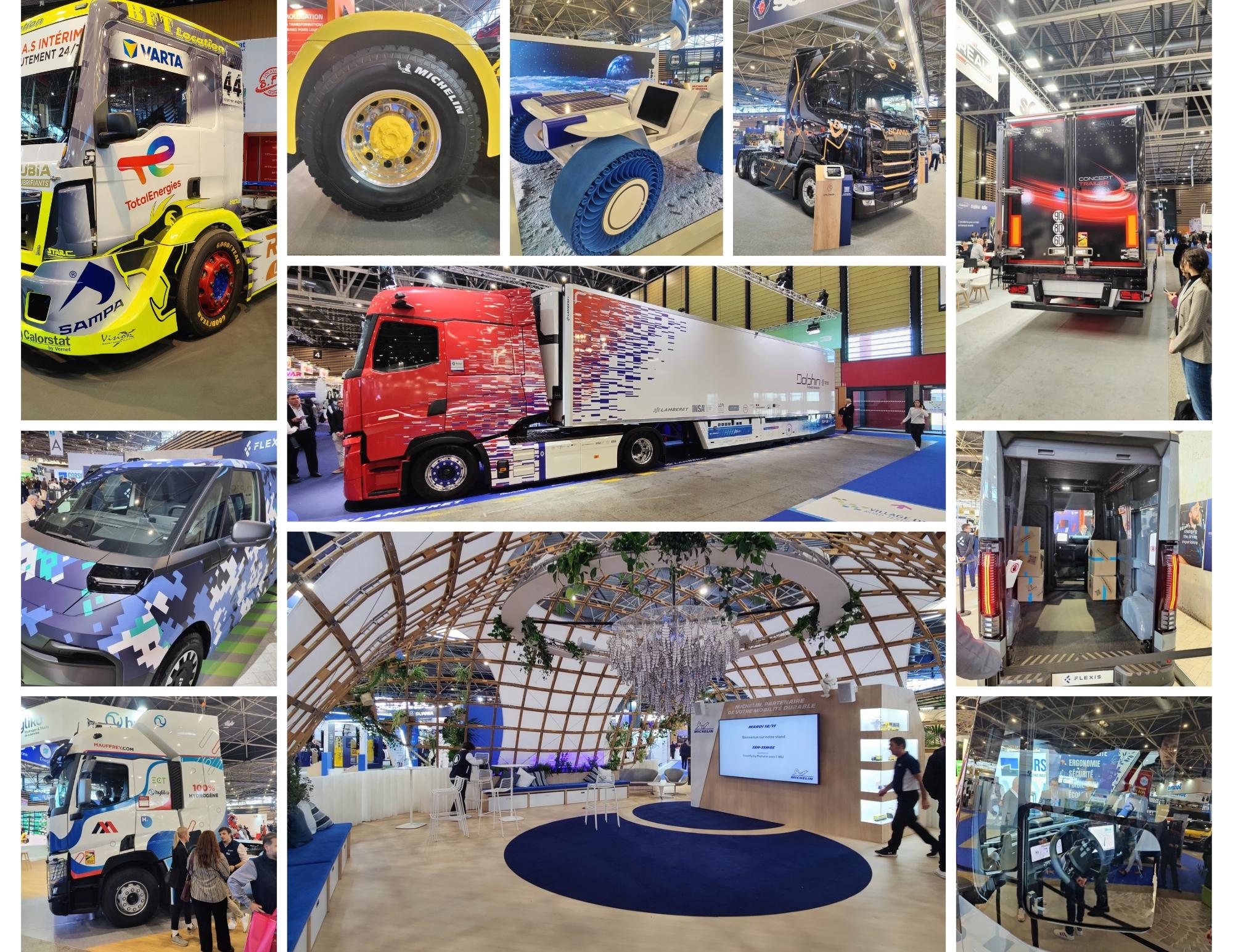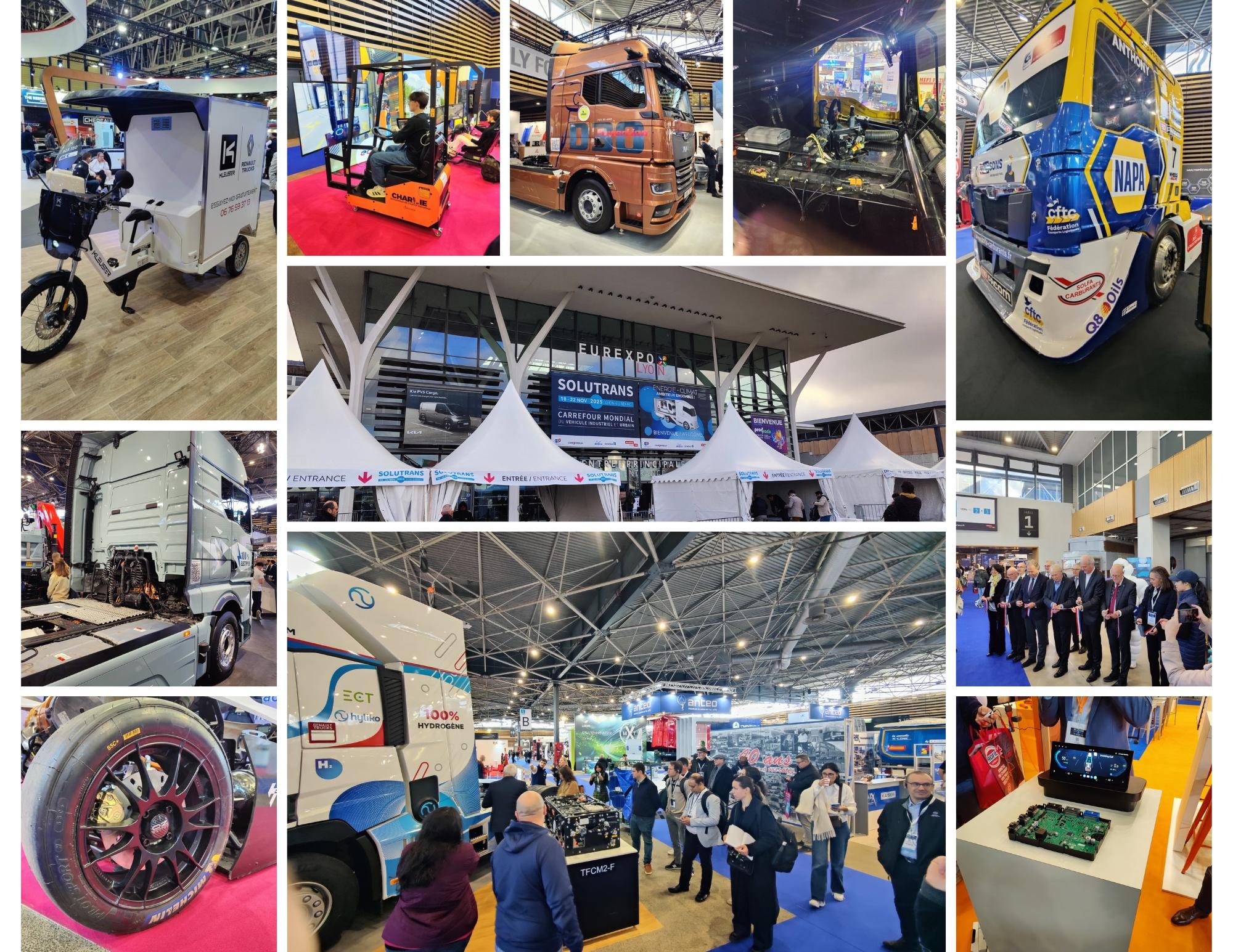Solutrans 2025: My takeaways

Today, I went to Solutrans, one of the biggest trade shows dedicated to transport and logistics. My first visit to Eurexpo, with the leadership team of my Mapping Factory team. It was an opportunity to combine a trade show visit with a workshop on our 2026 roadmap.
What struck me right away was the immensity of the place. Hundreds of booths, manufacturers, fleet managers, component makers, transport solution providers, and even a large area dedicated to digital activities. But beyond the impressive aspect, I realized something important: when you work in digital, you can easily lose touch with the field. You develop tools, optimize interfaces, improve algorithms… but you sometimes forget how all of this is actually used. Solutrans was an excellent opportunity for me to reconnect with this reality.
Unlock the full article
Drop your email below and I’ll send you the rest right away.
Today, I went to Solutrans, one of the biggest trade shows dedicated to transport and logistics. My first visit to Eurexpo, with the leadership team of my Mapping Factory team. It was an opportunity to combine a trade show visit with a workshop on our 2026 roadmap.
What struck me right away was the immensity of the place. Hundreds of booths, manufacturers, fleet managers, component makers, transport solution providers, and even a large area dedicated to digital activities. But beyond the impressive aspect, I realized something important: when you work in digital, you can easily lose touch with the field. You develop tools, optimize interfaces, improve algorithms… but you sometimes forget how all of this is actually used. Solutrans was an excellent opportunity for me to reconnect with this reality.
A trade show that forces you to face reality
When you primarily evolve in the digital ecosystem, you tend to live in a world of abstractions. APIs, user interfaces, dashboards, metrics. It’s comfortable, it’s clean, it’s controlled. But it’s also terribly disconnected from the physical reality in which our users operate.
At Solutrans, it’s impossible to escape the concrete. You’re faced with 40-ton trucks, refrigerated trailers, electric cabins, hydraulic systems. You talk with people who work daily in transport, who manage fleets, who optimize routes, who face real constraints: fuel consumption, regulations, maintenance, equipment wear.
This confrontation with the field is healthy. It reminds you that behind every feature we develop, there’s a driver in their cabin, a dispatcher in their office, a mechanic who has to intervene on equipment. Our tools aren’t ends in themselves, they’re supposed to facilitate the work of people who have concrete problems to solve.
The trade show was solution-oriented, and that changes everything. We’re not in pure technological speculation, we’re in pragmatism. Exhibitors don’t present what could exist in ten years, they show what works today, what can be deployed immediately, what responds to a real need.

Three trends redefining the sector
Walking between the booths, I identified three major trends that run through the entire 2025 edition of the trade show. And what’s interesting is that these trends aren’t empty marketing, they correspond to real market expectations.
Retrofitting is everywhere. This is probably what surprised me the most. I saw numerous booths offering retrofit solutions: Qinomic, Hyliko, Neotrucks, Chéreau… The principle is simple but powerful: instead of replacing all existing equipment, you modernize it, update it, improve it.
Take Neotrucks for example. They transform old truck cabins into electric cabins to move vehicles in parking lots. They’ve even adapted some cabins by adding a door at the back. It’s clever, it’s economical, and it responds to a concrete need.
Chéreau works on retrofitting trailer fittings. Rather than investing in new equipment, they propose modernizing the existing: better lighting systems with LED strips, improving aerodynamics to reduce turbulence and save energy. Retrofitting seems to be a fundamental trend in the sector, and it makes sense: it’s more economical, more ecological, and faster to deploy.
Sustainability is no longer a marketing argument, it’s an operational constraint. This value carried by Florent Ménégaux, Michelin’s CEO, who inaugurated the trade show, was also present everywhere. Exhibitors talked about energy savings, emission reduction, resource optimization.
The presented solutions are concrete and measurable. Chéreau improves the aerodynamics of its trailers to actually reduce consumption. Hyliko develops hydrogen solutions through retrofitting. Manufacturers integrate technologies that allow tracking and measuring the environmental impact of fleets.
Artificial intelligence, yes, but reasoned. Unlike what we see in many tech events where AI is brandished as a miracle solution to all problems, at Solutrans the approach is much more measured. AI is present, but always associated with concrete and verifiable use cases.
You can find AI agents for planning tasks in their TMS. No excessive promises, just a functionality that helps dispatchers do their job more efficiently. There was talk of rational technology, technology deployable at scale. Not tech for tech’s sake, but tech serving an identified need.
Urban logistics: innovation serving pragmatism
According to trade show regulars, we’re seeing strong development in offerings for urban logistics services. For example, Flexis. Their proposition is simple: address the specific needs of urban logistics with adapted vehicles. Their model is 25 cm shorter than a standard van, which improves maneuverability in the city.
They don’t just sell a vehicle, they directly integrate fleet services into the vehicle. And there, obviously, my cartographer brain kicked into gear: there’s so much to do in this domain.
I also spoke with Kleuster, which manufactures cargo bikes in partnership with Renault Trucks. It’s interesting to see that bicycle mobility is now integrated into urban delivery strategy. These vehicles that are tiny next to the big trucks are a perfect complement in the distribution chain.

Key takeaways
My visit to Solutrans reminded me of a simple but essential truth: you need to step away from your screen regularly. When you work in digital, you risk locking yourself in a bubble where everything is abstract, optimized, disintermediated. But the reality of the field is much more complex and nuanced.
The three major trends I observed — retrofitting, sustainability, reasoned AI — all have one thing in common: pragmatism. The transport and logistics sector doesn’t have the luxury of technological speculation. Companies need solutions that work now, that are economically viable, that respond to real constraints.
The discussion with my colleagues from Michelin Connected Fleet also reminded me of the importance of listening to those who are in contact with customers. We can put in place all the processes we want, have the best tools for gathering needs, if we don’t really take into account what comes up from the field, we’ll develop products disconnected from real expectations.
For me, the next step is clear: we need to integrate these learnings into how we develop our products. How can we ensure that field feedback is really heard? How can we validate that what we’re developing responds to real needs and not technological fantasies? How can we organize these moments of reconnection with the field more regularly?
Solutrans, for me, was much more than a simple trade show visit. It was a healthy reminder that our job isn’t to develop technology for technology’s sake, but to create tools that actually facilitate the work of people who have concrete problems to solve. And for that, you need to stay connected with the field.